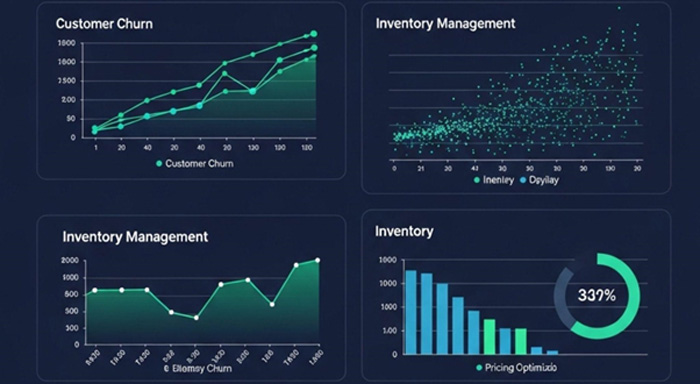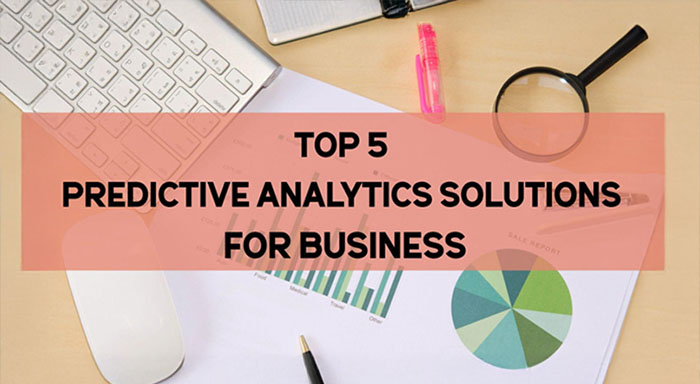Imagine if your business could see the future, not in a sci-fi way, but in a grounded, data-driven way. What if you could anticipate customer churn, forecast next quarter’s demand, or even adjust prices in real time based on market behavior? That’s not magic; that’s predictive analytics.
If you're curious about integrating AI-powered forecasting into your business but don’t know where to start, you’re in the right place. This guide will walk you through what predictive analytics really means, when you should consider using it, and five practical solutions that can transform the way you make decisions. You don’t need to be a data scientist to understand this. But, taking the best data analytics course can help you grasp the fundamentals and see how these concepts apply in real-world scenarios. You just need curiosity and a willingness to explore.
What Are Predictive Analytics and Why Should You Care?
At its core, predictive analytics is about using existing data to make smart predictions about the future. Think of it like reading patterns from past customer behavior, sales trends, website activity, or even external data like weather or market fluctuations to uncover what’s likely to happen next.
It uses statistical models and machine learning to find these patterns and turn them into actionable insights. But here’s the best part: it’s no longer limited to big tech giants. Today, even small and medium-sized businesses can use predictive analytics tools to compete smarter.
When Should You Use Predictive Analytics?
Let’s be clear. Predictive analytics isn’t a shiny add-on. It’s a solution to specific problems. Here are a few signs it’s time to explore it:
- You're constantly guessing why customers leave.
- Your inventory keeps missing the mark, either too much or too little.
- Your marketing feels like throwing darts in the dark.
- Your pricing strategy is fixed while competitors adjust on the fly.
If any of these sound familiar, it’s time to let data do the heavy lifting.

Top 5 Predictive Analytics Solutions You Can Implement in Your Business
These aren’t theoretical ideas. They’re real-world tools used by businesses across industries. This blog will break them down in a way that’s easy to understand, with examples that show what’s possible. If you're ready to implement any of them, you can explore tailored predictive analytics solutions designed to work with your data and goals.
1. Customer Churn Prediction: Keep Customers Before They Leave
Ever had a long-time customer disappear without warning? It hurts financially and emotionally. Churn prediction helps you catch the signs early.
By analyzing behavior like reduced engagement, delayed payments, or complaints, a churn model predicts who’s likely to leave. That gives you time to act, reach out, offer support, and give them a reason to stay.
Example: A fitness app notices users who stop logging workouts for 7 or more days are 60% more likely to cancel. It starts sending motivational nudges on day 5.
Why it matters: Retention is cheaper than acquisition. And understanding why people leave improves your product.
2. Demand Forecasting: Stock Smarter, Sell Smarter
If you've ever been stuck with too much inventory or, worse, run out of a bestseller, you know the pain of poor forecasting.
Demand forecasting models analyze past sales, seasonality, promotions, and external data like holidays or weather to predict future demand.
Example: A clothing brand predicts higher winter coat sales starting early October, so it ramps up inventory in September and avoids last year’s stockouts.
Why it matters: Accurate forecasts reduce costs, prevent losses, and increase customer satisfaction.
Even industries like agriculture and healthcare are using demand forecasting today.
3. Dynamic Pricing: Stay Competitive, Profitably
Ever noticed how flight or hotel prices change by the minute? That’s dynamic pricing in action. It’s not just for big players. E-commerce stores, subscription services, and even restaurants are catching on.
Dynamic pricing models adjust prices based on demand, competitor activity, customer profile, or time of day.
Example: An online electronics store raises prices slightly during peak traffic hours and offers micro-discounts during slow periods, increasing overall revenue.
Why it matters: It helps you stay competitive without undercutting your value.
With the right tools, you don’t have to change prices manually. You can automate the logic behind it.
4. Customer Segmentation and Personalization: Talk to the Right People the Right Way
Not all customers are the same. Some are loyal fans, others are bargain hunters. Treating them the same means missing opportunities.
Segmentation models group customers based on behaviors, preferences, and history. That fuels personalization: targeted emails, custom landing pages, and tailored product suggestions.
Example: A skincare brand segments users by skin type and purchase history. Instead of generic emails, it sends “Winter Routine for Dry Skin” to Segment A and “Sun Protection for Oily Skin” to Segment B.
Why it matters: Personalization increases engagement, loyalty, and conversion.
You can start small. Even basic segmentation improves marketing results dramatically.
5. Predictive Maintenance: Stop Problems Before They Happen
If your business relies on machinery, vehicles, or hardware, this one’s huge. Predictive maintenance models detect patterns in equipment behavior that suggest failure is near.
Example: A logistics company uses engine temperature and vibration data to predict when a truck will need servicing, saving thousands in emergency repairs.
Why it matters: You reduce downtime, avoid costly failures, and extend equipment life.
This solution is now common in manufacturing, logistics, energy, and healthcare.
Is Predictive Analytics Right for Your Business?
If you have data (even messy spreadsheets), recurring problems, and a desire to improve how you operate, predictive analytics is worth exploring. You don’t have to implement all five solutions at once. Start with one, maybe churn, maybe demand forecasting, and see how data transforms your decision-making.
You can begin with off-the-shelf tools or dashboards. But for long-term value, custom models tailored to your data and goals will go much further.
To stay ahead with the latest strategies in predictive analytics, senior leaders often turn to Executive Conferences for expert insights.
Final Thoughts
Predictive analytics isn’t about replacing your business instinct. It’s about enhancing it. You already make decisions every day. With these tools, you’ll make better ones, faster, with fewer regrets and more results.
If you’re serious about future-proofing your business, don’t wait. Start exploring your data, identify one area to improve, and take the first step toward a smarter, more strategic business.



